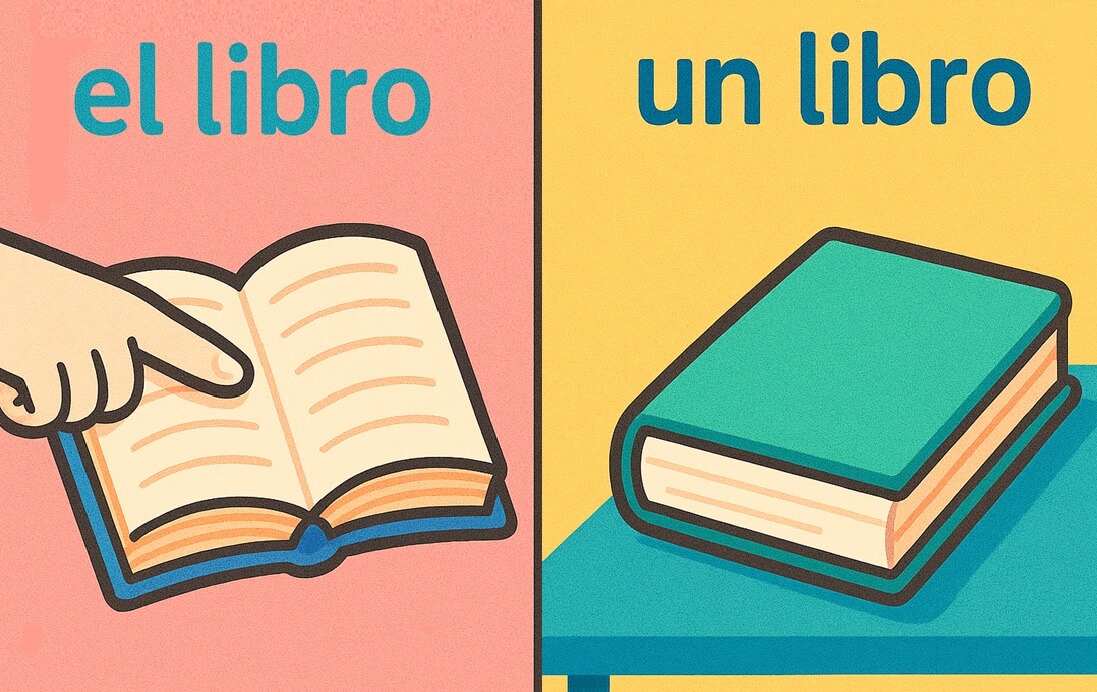
Articles—the definite and indefinite—are one of the first hurdles when learning Spanish. They’re small words, but they play an important role in grammar, meaning, and fluency. Use them incorrectly, and something doesn’t sound quite right. Get them right, and you sound natural.
Let’s break it down.
What Are Spanish Articles?
Articles are words that occur before nouns. Spanish has two types:
- Definite articles = “the”
- Indefinite articles = “a,” “an,” or “some”
Unlike English, Spanish articles must agree with the gender (masculine or feminine) and number (singular or plural) of the noun.
The Definite Articles (“THE”)
| Gender | Singular | Plural |
|---|---|---|
| Masculine | el | los |
| Feminine | la | las |
- el libro = the book
- la casa = the house
- los perros = the dogs
- las ventanas = the windows
The Indefinite Articles (“A / AN / SOME”)
| Gender | Singular | Plural |
|---|---|---|
| Masculine | un | unos (some) |
| Feminine | una | unas (some) |
- un coche = a car
- una silla = a chair
- unos gatos = some cats
- unas flores = some flowers
Article–Noun Agreement: Gender and Number
All nouns in Spanish are masculine or feminine. Generally:
- Words that end in -o are masculine → el zapato
- Words that end in -a are feminine → la mesa
But there are exceptions (el día, la mano). Don’t rely only on endings—practice nouns with their articles from the start.
Plural nouns? Add -s or -es, and adjust the article too:
- el perro → los perros
- una mujer → unas mujeres
A Curious Exception: The “el” Rule for Feminine Nouns
Feminine nouns sometimes use el instead of la in the singular to avoid clumsy double vowel sounds (before a stressed initial a or ha):
- el agua (not la agua)
- el alma (not la alma)
But they are still feminine! Plural forms confirm it: las aguas, las almas.
Rapid Comparison with English
| English | Spanish |
|---|---|
| the book | el libro |
| a book | un libro |
| the tables | las mesas |
| some tables | unas mesas |
In Spanish, articles can’t be dropped as often as in English. You need them before most nouns, even in general statements.
When Not to Use Articles
Spanish leaves out articles in a few cases where English wouldn’t:
- With professions: Soy profesor = I’m a teacher (not un profesor).
- With some nation names (optional): México es bonito; El México moderno es diferente.
These are exceptions. In general, use the article.
Pro Tips
- Master nouns with their articles: Don’t memorize mesa—memorize la mesa. It reduces grammar headaches.
- Use flashcards with gender and plural forms.
- Notice when native speakers use articles—they’re everywhere.
Final Word
Learning Spanish articles isn’t just about memorizing rules—it’s about forming habits. Pay attention, read often, and train yourself to see the article and noun as a package deal.
Little words, big impact. Master them.



